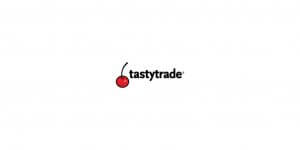Today’s traders do not want chintzy marketing gimmicks – they want good, solid and well organized platforms and brokerages
Vine and Meerkat are a thing of the past, despite being lauded as the next best thing just two years ago by people sporting unusual hairstyles. What traders really care about is quality and reliability of their platform, the transparency and execution model of the brokerage, where trades are being executed and how their assets are being handled and secured, not superficial gimmicks

How many times has every executive in the electronic trading industry been pitched to by either an over-the-top looking targeted online advertisment or by an over-confident and over-styled sales and marketing ‘guru’ who is barely out of diapers that the survival and future-proofing of their business is absolutely demendent on some inane vaporware that is being touted as ‘the next big thing’ or even more banal – ‘totally viral’.
Fads and phases are a dominant feature of the internet, and being an industry sector that provides its services online, the electronic trading business is a target for the peddlers of modern fads that suddenly take hold (largely among the Millenial generation) and then are gone and long since forgotten very shortly afterwards.
Whilst the conundrum relating to how retail FX firms can attract and retain customers in a highly competitive market in which a vast number of companies offer a very similar product and service remains, and the cost of acquiring customers is one of the highest in any commercial sector worldwide yet results in a relatively short customer lifetime value, specialist tools and services are vital, and in some cases riding waves that are ‘trendy’ can also be a temptation for brokerages.
During the past two years, many marketing people whose day is spent cultivating beards and musing over the quality of their skinny latte instead of doing something old fashioned and conservative, such as, for example, a decent day’s hard work, have been very vocal when an all-new phenomenon appears that is heralded as a cure-all boon to businesses looking to engage new, young customers.
Two that come to mind are Meerkat and Vine.
Merkat was launched in Spring 2015 as an application which streams live video via Twitter by an Israeli startup that was aiming at the time to become a major contender in digital marketing for online companies.
At its launch, I spoke to an expert in this field, who regarded it as a massive opportunity for the FX industry. “Meerkat offers tremendous opportunities for brands and individuals looking to communicate and engage with their followers. Here are a few reasons why Meerkat is so important in today’s social marketing landscape” he enthused.
One aspect highlighted was its seemless integration. “After mobile, seamless integration and user focused product is critical in enabling an app to reach critical mass. A tech influencer coined the term frictionless integration, which pretty much sums up the ease of getting onto Meerkat. There is no editing, no wires, no lag time, it is just a case of downloading the application.”
Yes indeed. So what? How does this enhance the trading environment for those actually committed to using a digital trading platform and turning a decent amount of volume?
Another aspect that this particular pundit vaunted was that Meerkat appeals to the Millennials. “Again, Meerkat gives campaigns the ability to stream content live right where Millenials like it- their phones. Sitting in front of a TV is not how this generation consumes, it’s mobile first. Meerkat will open up new opportunities for engagement and audience development with young people” he said.
Again, this does not generate any value or return. All it does is allow Millennials to say that they have a new application.
Vine became the internet’s premiere tool for making short-form videos at approximately the same time that Meerkat arrived on the scene.
Its founders had envisioned that a tool for making 6-second clips was a way to help people capture casual moments in their lives and share them with friends. It was part of their pitch to Twitter, which bought the company for a reported $30 million in October 2012, seeing it as a near-perfect video analog to its flagship app’s short-form text posts. FX firms in some regions were attracted to this in order to send very quick, catchy messages to customers and engage them whilst in the specifically interesting part of the trading day, or to provide information on a news event or new service that would catch their eye.
Both Vine and Meerkat are no longer. Both failed.
After a $12 million round of funding at outset, and a year and a half on the market, it was all over for Meerkat, and Vine disappeared into the abyss last week, demonstrating that ancillary apps for streaming very generic content to retail customers is not always profitable.
It is not surprising. Extraneous gimmicks that are invented by trendy people for trendy people are not serious business tools.
Serious business people do not spend their day watching ‘top 10s’ on YouTube or recording every move they make in six minute videos, neither do they sport pointed beards and have a perpetual paper cup with an ice cafe in it in their right hand.
The coffee shop is not the trading floor. Berlin is not London. Melbourne is not Tokyo or Singapore.
In the summer of this year, FinanceFeeds explained in detail why angling services toward Millennials is expensive and fruitless, concluding that 26% of 18 to 30 year olds do not save or invest anything at all, with 62% admitting that they are clueless about financial matters, whereas the age range between 30 and 45 are investment savvy whilst being a lot less interested in gimmicky add-ons which cost a fortune to develop and do not ultimately regain the capital outlay in customer volume.
Whilst the gimmicks that cost a fortune, add no value and fail quickly are very much in the public eye, the opposite end of the scale – and the one that traders really value and concentrate on – is working round the clock to ensure a solid and reliable trading environment.
MetaQuotes and Spotware (the developer of the cTrader platform) are two major platform providers which supply off-the-shelf third party platforms, and in the case of Spotware, will actually design a bespoke one for you if you are a retail broker wanting to enhance your value proposition or attract a specific audience.
Both firms have some of the most astute developers in the business, and even the very young professionals at the firm fully understand the underpinnings of a retail trading environment and work tirelessly to provide the right products and support the entire ecosystem. This is a far more important facet than fly-by-night follies.
London’s giants CMC Markets and IG Group have in house developers which continue to enhance their platforms, collect big data relating to customer requirements, analyze it and evolve their entire trading environment.
CMC Markets’ most recent ‘Next Generation’ trading platform cost over $100 million to develop and is supported and operated in-house. The result? Loyal customers on a domestic market for over 26 years, steady share prices and a market capitalization of £542 million.
Integration technology specialists oneZero, Gold-i and PrimeXM feature very highly in the liquidity bridge provisioning business and in connecting retail traders to a live market provided by equally dedicated prime brokerages that aggregate bank feeds, and risk management solutions that allow brokers to give the best market conditions without exposing themselves or their clients unduly are critical.
These are the establishment. These are the critical matters that traders care about globally.
Cyprus is home to the largest number of retail FX brokerages (mostly using MetaTrader 4) in the world. Recent discussions with brokerages and their respective technology providers in Cyprus unveiled that traders and introducing brokers are concerned about how trades are being priced, what risk management measures are in place, who the prime brokerage is, and how client assets are being handled. Video engagement and ancillary apps which are not signals or social trading did not feature at all.
Even social trading as a tool for client engagement has largely followed the route of giving traders a tangible strategic edge rather than a bauble or gimmick.
Tradency recently launched its RoboX platform, which uses big data collected by the firm over the last 11 years to automatically select new lead traders and new strategies should a trader begin to lose confidence and trade less volume, or should a market event occur that stops a particular strategy being relevant to a particular trader any more.
In its first three months, RoboX onboarded 12 brokerages, the first being FXDD.
FinanceFeeds spoke to Lubomir Kaneti, COO of FXDD, who explained exactly the value of such a system.
“While managed and signal-based or social trading are not new and have their role in the market serving particular segments of investors. Here we have an innovative idea where the signal based trading is blended with AI that is intended to deliver personalized solution matching the goals and risk tolerance of the particular client” said Mr. Kaneti.
“Of course volumes can be written about how good the algorithm is and how much better the personalized solution is compared to other options, but I think the team at Tradency has a lot of experience in this area and they are committed to providing a world class product” – Lubomir Kaneti, COO, FXDD
Mr. Kaneti continued “What we see now is of course the first wave of innovation in this direction. I have no doubt that it will evolve in time and it will prove its efficiency.”
“We have to remember here that this solution relies on the client providing feedback that honestly describes their views and tolerance as an investor. Small changes in feedback may result in significant change in performance over time, however investors should not forget that RoboX does not take away the risk associated with leveraged investing, I believe it is intended to help investors try better more-optimized strategies” concluded Mr. Kaneti.
There are so many engagement tools on the market, some are cartoons, some are educational, and some are aimed at social network-orientated trading, but most have zero traction. Only when conducted in a way that actually makes an enhancement to the trading environment will it work.
It is clear that today’s traders care about the quality and reliability of their platform, the transparency and execution model of the brokerage, where trades are being executed and how their assets are being handled and secured.
The rest is a five-minute-wonder noise which emulates from the cafes rather than the development centers of major financial institutions or technology providers.









